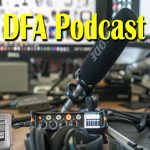Well, we got the December 2024 data on unemployment today, and overall Australia’s unemployment rate remained low in December as the economy extended a streak of hiring gains, underlining the labor market’s unusual resilience to elevated interest rates.
Employment jumped by 56,300 — driven entirely by part-time roles — versus a forecast 15,000 gain. The jobless rate rose to 4% rising by 0.1 percentage points in seasonally adjusted terms.
Now, we should say there were some variation between the outgoing and incoming rotation groups this month, sufficient I think to explain the slight shifts we are seeing. But the headline news is the jobs markets remains pretty strong.
Economists say there is no urgency for the Reserve Bank of Australia to deliver a pre-election cash rate cut in February after a bumper jobs report showed the labour market continued to defy expectations of a looming slowdown.
That would leave the central bank’s April meeting as the only point before an election due by May 17 for the RBA to deliver relief to struggling households, narrowing the chance of the Albanese government getting an electoral boost from lower rates.
Jim Chalmers wrote “We’ve shown you can make substantial & sustained progress on inflation without sacrificing jobs. 1.1 million jobs have been created under the Albanese Labor Govt including an extra 56,000 last month.
No talk there about the massive migration flows which are pumping the economy equivalent, on one calculation to one person arriving every 46 seconds. Or the fact that household disposable income in real terms is crashing, and well below the G7 Countries, the US, or even OECD countries.
“This is the soft landing that we are seeking, that we are delivering,” Dr Chalmers told reporters.
The real story is high migration, plus because of the financial pressure on many households, more are picking up two or more jobs, or side hustles with nearly a million Australians in this category.
When you peel back the onion, the bulk of recent employment gains have been in the so-called “non-market sector”, which includes the government-funded industries of education, healthcare and the public service. About half the increase in hours worked across the economy in the 12 months to December were in the non-market sector.
The tight labour market, along with weak productivity growth and elevated government spending, makes it tough for the Reserve Bank to achieve low and stable inflation!
http://www.martinnorth.com/
Details of our one to one service are here: https://digitalfinanceanalytics.com/blog/dfa-one-to-one/
Go to the Walk The World Universe at https://walktheworld.com.au/

